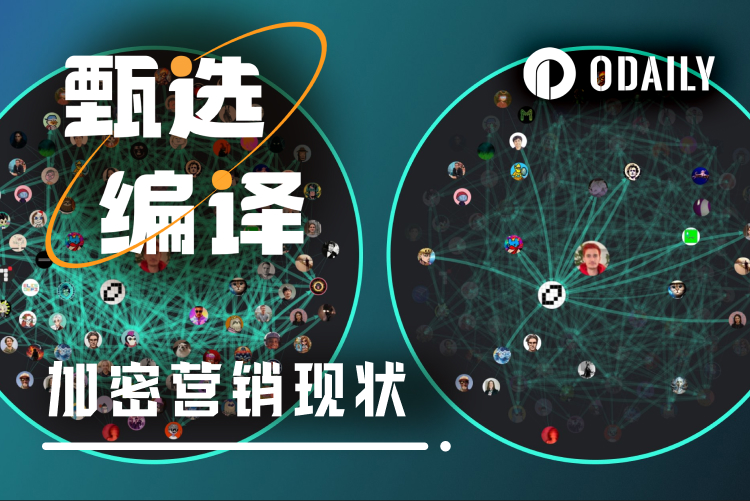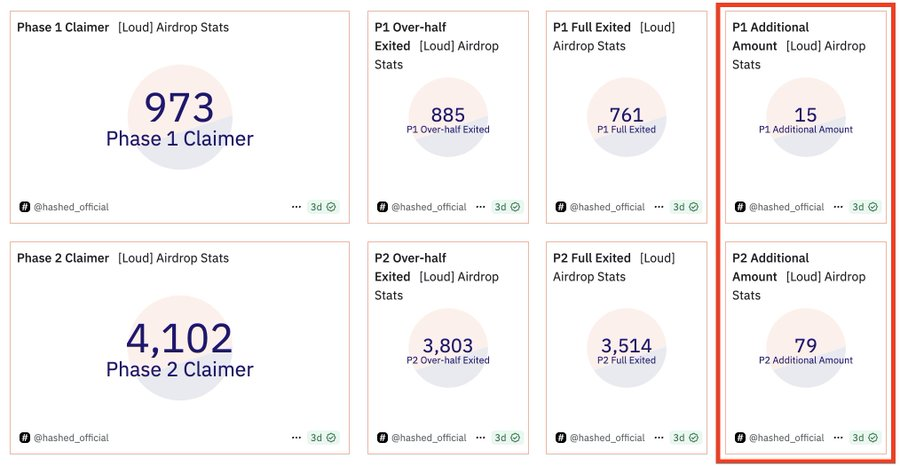How long can the “mouth-stirring” economy last? Where is the next stop for crypto marketing?
Original author | Brian ( @BrianAitch )
Compiled by | Odaily Planet Daily ( @OdailyChina )
Translator | Dingdang ( @XiaMiPP )

Editor's note: The "mouth-pushing" economy is at the forefront of the storm and has become a hotbed for retail investors and project owners to compete. However, this "mouth-pushing" craze is currently facing severe challenges: the proliferation of low-quality content, rampant brushing behavior, and increasing user fatigue with the "reward-driven" routine have led to a continuous decline in conversion rates. Taking Loudio as an example, the market value collapsed from US$98 million to US$3,800 in 25 days, exposing the vulnerability of the "mouth-pushing" economy to over-reliance on noise-based marketing. This article analyzes the pain points of the current "mouth-pushing" economy, explores its impact on crypto project marketing, and rethinks the fundamental limitations and room for improvement of current crypto project marketing.
1. Inefficient marketing costs
Most projects invest heavily in marketing partnerships like Kaito. Just to launch Kaito Earn, you need to pay hundreds of thousands of dollars upfront, and then continue to invest the same amount of tokens or dollars every month.
Kaito does play a role in brand exposure and topic generation, but most of these interactions are driven by “hired” content creators with limited influence, and the overall quality and signal strength are low.
What the project really wants are high-quality conversations that can resonate with the community, convey brand values, and ultimately achieve effective conversions. But such conversations are rare.
2. Evaluate marketing effectiveness from conversion rate data
Crypto projects generally have two main goals:
Increase the number of product users
Increased token price (i.e. more token buyers after TGE)

(Data source: Dune @hashed_official )
Take Loudio as an example:
Among the participants in the first phase, the proportion of additional quotas was approximately 1.54% (15/973)
The second phase is 1.93% (/4102)
In comparison, the conversion rate of Google Ads is about 4.29% ~ 6.96%
In other words, Loudio’s overall conversion rate is much lower than traditional digital advertising.
3. The “noise” problem caused by lack of substantive content

Many brands spend a large portion of their marketing budgets on creating “buzz” around X, particularly relying on the InfoFi platform. However, without substance, these marketing outputs will ultimately become meaningless noise.
To quote @Chilearmy123 :
Even if Project K announced that it would give out more than $15,000 in rewards to Kaito users every month, the public would only remember that “Project K is good at giving out money.” If it launches a “Mascot Meme Coin” and uses a similar distribution method to Loudio, people will naturally start discussing its significance, community culture, user experience, and so on.
Therefore, instead of relying on platform tools, it is better to choose clear topics and specific incentive mechanisms, such as games, Meme coins or DApps. These topics are more likely to trigger active discussions and high-quality conversions from users.
If a project relies solely on incentive mechanisms to attract early users on the left side of the marketing curve but lacks substantive content, it will ultimately be difficult for these people to truly complete the conversion and enter the next stage.
4. Return to the fundamentals of product and team
To borrow @leonabboud 's analogy:
The project is the musical instrument and marketing is the amplifier or speaker.
Many teams try to use louder “sounds” to cover up “poorly tuned instruments” (imperfect products) and “unskilled performers” (incompetent teams).
This can increase exposure in the short term, but if the project itself lacks basic skills, even popular tools like Kaito will not bring ideal results.
As the crypto industry matures and participants become more professional, if you still believe that "spending money to buy attention" can bring real value, you underestimate the wisdom of the market and users.
5. Structural contradictions of InfoFi
The misalignment between the InfoFi platform and crypto projects in terms of incentive structures and goals is becoming increasingly apparent.
The InfoFi platform pursues: attracting more incentives (such as USDC, project tokens), taking commissions, distributing rewards, and expanding the user pool;
What the project team really cares about is whether users will actually use the product or continue to purchase tokens after TGE.
Currently, most activities on InfoFi are still led by "hired" creators who have limited influence, resulting in an overall conversion rate that is even lower than traditional advertising channels.
In my opinion, the platforms that can win in this round of InfoFi competition need to solve the following two core problems:
Empower high-signal, high-quality creators to drive real community-driven conversations;
The platform incentive structure must be aligned with the project incentive goals, because the rewards provided by the project are the fuel for InfoFi's operations.
We are already seeing early signs of this trend, indicating that InfoFi is moving towards a more sustainable and productive phase of development.
Case Study
Virtuals
Although Virtuals is not an InfoFi platform, the data shared by its co-founder @ethermage reflects the distribution platform’s high attention to “conversion rate” and “incentive mechanism”:
About 35% of Genesis participants purchased additional tokens on the secondary market.
The team is optimizing the distribution mechanism to be more inclined to reward firm holders, especially those users who double down on their conviction.
This approach reflects that the entire industry is gradually moving towards the goal of "transformation orientation + long-term value creation" .
Kaito
Kaito is actively responding to community feedback and will update the algorithm on June 17. The main changes include:
1) Quality vs. Quantity : Posts that only mention awards or rankings but lack valuable insights or project reviews will no longer receive attention;
2) Attention allocation mechanism: To prevent a single piece of content from over-ranking, there is an upper limit on the total amount of attention that can be obtained in each cycle, and a single tweet cannot occupy too high a weight;
3) Anti-"small circle" mechanism: The platform closely monitors internal interactive behaviors and has a strong protection mechanism to curb the behaviors of "brushing interactions" and "group scoring";
4) Loyalty incentives: The platform encourages users to maintain long-term, continuous value-oriented participation while avoiding punitive restrictions on broad participation;
5) Team control: Project teams can customize the maximum amount of attention that tweets can contribute each week, increasing platform flexibility.
Since the launch of Kaito Earn, we have always focused on user conversion. This is reflected in the data shared by @MagicNewton :
Currently, 33,699 agent accounts have been activated through Kaito, accounting for about 30% of Newton's total activity.
These agents continue to generate fee income for Newton by purchasing BTC, KAITO and other assets.
The number of activated agents is still growing steadily.
To fully evaluate Kaito’s performance as a “conversion engine”, you should focus on the following key metrics:
Post-TGE agent account retention rate
Kaito Earn’s fee output vs. platform expenditure ratio
How many of the users who participated in Kaito Earn purchased additional tokens on the secondary market?
Although more time and data are needed to draw a final conclusion, it is clear that Kaito has a clear understanding of the importance of conversion rate and is continuously optimizing its algorithm mechanism based on community feedback.
Clout
Kaito is not the only InfoFi project that has adjusted its algorithm to improve conversion efficiency. On June 25, 2025, @fantasy_top_ launched Clout Pro and launched the Week 0 event in conjunction with @monstersdotfun .
Clout Pro is an API and SDK for attention tracking, helping project owners quickly build rankings and identify the most active users.
Key features include:
Anti-manipulation protocol: built-in anti-brushing, anti-farming, and anti-fake interaction mechanisms;
Customizable analysis tools: support sentiment filtering, keyword identification, anti-farming mechanisms, etc.
After issuing tokens and points, the platform will focus on monitoring the proportion of users who purchase additional tokens. This mechanism is more complicated than Loudio because it is also affected by multiple factors such as NFT, Abstract level, Ethos score, tokens, etc.
It is worth noting that the Clout team is constantly optimizing its social and incentive algorithms and providing customized support to project parties. This flexible mechanism is expected to increase conversion rates, but the final effect still depends on the matching degree of execution and strategy.
Currently, there are other platforms competing in the InfoFi ecosystem, such as @cookiedotfun ’s Snap. Although it is still impossible to tell who will win in the end, one thing is for sure:
Whoever can provide the largest reward pool, the most sophisticated incentive alignment mechanism, and achieve real user conversion will stand out in this round of InfoFi cycle.
6. Conclusion: What you need is not a bigger speaker, but a better melody
Marketing is only effective if the project fundamentals—product, message, and community—are solid.
What we really need is more beautiful music, not speakers with louder volume.
The InfoFi platform should focus on helping projects improve conversion rates, whether it is increasing the number of platform users or promoting secondary market purchases of tokens.
The key to success is not to cover the widest audience, but how to effectively convert the audience.
InfoFi platforms that can accurately align incentive structures with project goals, provide sufficient reward pools, and attract high-quality creators are most likely to win this game.
I am a Kaito staker myself. If you disagree, you may be right.
Attention is not everything.



